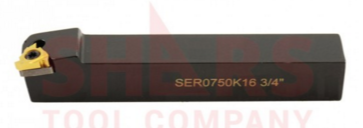- Joined
- Apr 8, 2013
- Messages
- 2,020
Like others have said, those are only turning tools. Being a beginner on a light lathe you're only stacking the deck against yourself using carbide. Carbide won't tolerate a lack of rigidity and it also doesn't like it when you stop the spindle before backing off the cutter. Get yourself a fishtail gauge and grind some HSS threading tools. I grind most tools freehand but my threading cutters are ground on a disc sander with a miter gauge. I use a piston type QCTP and feed with the Xslide. You might also check your setting for that thread you're cutting. That pitch looks a mile faster than a 1.5mm pitch to me.

